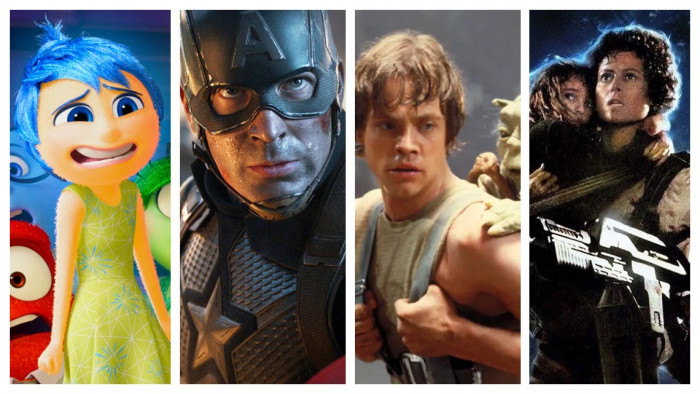A former A&R man on why the mid-noughties indie era has no need for an #amnesty
Were the 'landfill indie' years really that bad?


A couple of years ago a good friend of mine decided, just for fun, to do a club night, at London's sadly-missed Buffalo Bar, which transported you back to a mid-noughties indie disco. It was called, of course, So If You're Lonely.
I was initially sceptical. It wasn't even a decade since the epicentre of that scene, so it was too early to really get nostalgic, and would those songs really stand the test of time? There was so much indie landfill, remember? All those terrible bands that couldn't play, right? The Pigeon Detectives?
I was wrong.
It was amazing.
Tune after tune of songs with energy, attitude, melody and off-beat hi-hats. So much hi-hat. But my God, could you dance to it. And, after all, wasn't that what Franz Ferdinand declared that their mission statement was? "Records that girls can dance to.” Well, they did it, and then everyone else did it too.
In the wake of the #indieamnesty Twitter trend and its insinuation that we should all feel a little guilty for that 'aberration' when we were younger, I feel duty bound to stick up for the mid-noughties indie explosion, and proclaim that we all have nothing to apologise for, and nothing to declare but a fantastic few years of fun and excitement.
See, you have to remember what came before.

The dour, macho, angry middle-class moaning-at-your-parents that was nu-metal led by the charisma-free Fred Durst, the last, tired fumes of nineties pop and dance and a general sense that everything had been done. At the turn of the century, music was a pretty joyless place.
And then came The Strokes, who simply had everything. The tunes, the sound, the look, the sense of style. Then Franz Ferdinand arrived, with their arch lyrics, sharp guitar lines and strutting rhythms. Take Me Out, as every indie DJ knows, was the perfect song to move from the Strokes' new wave into the dance section of the night.
We even took American bands into our arms, welcoming The Killers and Kings of Leon way before their native America did. The Libertines arrived with their talk of Arcadia, mountains of drugs and the NME got their cover star for the next ten years, pretty much uninterrupted, while Razorlight swaggered their way into the charts led by rent-a-quote Johnny Borrell.

In 2005, I became an A&R scout, thrust into the belly of the beast with the mission statement: find bands. Within weeks the Arctic Monkeys had been signed and the country was awash with indie bands all keen for a piece of the pie. I was out at gigs six nights a week, all across the country. Scenes were springing up everywhere.
London, of course, had Bloc Party leading the charge, and then a whole load of other bands spawned by the success of the Libertines: The Rakes, Good Shoes, The Holloways, Dogs. Leeds had a vibrant scene, sparked off by the success of Kaiser Chiefs, based around the Faversham venue, where I watched the likes of This Et Al, ¡Forward Russia!, Duels and the Sunshine Underground. Liverpool had To My Boy, The Little Flames (featuring Miles Kane in their ranks), Hot Club De Paris and The Wombats.
Manchester's Bierkeller on a Friday night was the place to watch the hot new acts from the UK's second cultural city - with the likes of The Whip bringing electronica into the mix - while Sheffield was a city inspired by the rapid ascent of the Arctic Monkeys: the Long Blondes, Milburn, Little Man Tate, the John McClure-featuring 1984 - before he went on to form Reverend and the Makers.
There were great little bands popping up all over the place, and great gigs on everywhere. In London, it was a regular event to dart around the city watching three bands a night (all of whom you actually wanted to see), with the legendary Club Fandango a constant scrum of industry types.
The In The City festival, founded by the legendary Tony Wilson in Manchester, was a must-see, with its Brighton competitor (which ultimately finished it off) The Great Escape starting in 2006, while other small, city-specific festivals began springing up everywhere. There was a critical mass of bands in each place - and an atmosphere of friendly cooperation and competition between them all (an example, as any geographer worth their salt will tell you, of a neo-Marshallian node) - that helped all of them move on to greater success as a result of being part of something bigger.
Seven inch vinyl began its renaissance, with independent record shops booming across the country. So much so that I started my own indie label, KIDS Records (releasing the likes of The Wombats, The Whip and I Like Trains), to go toe-to-toe with the likes of Transgressive, Young and Lost Club, High Voltage, the long-established Fierce Panda, and Dance to the Radio, run by ¡Forward Russia!'s none-more-friendly Whiskas.
Rough Trade on the Portobello Road was constantly packed, Pure Groove on the Holloway Road put on a host of in-stores, with Manchester's Piccadilly Records and Leeds' Crash and Jumbo doing a constant roaring trade. Countless others across the country reported booming trade, with hot new singles often selling out by lunchtime on a Monday.

And the clubs, of course, were amazing. In London alone, DJing at Club NME at Koko on a Friday night was always a joy, White Heat at Madame Jojo's was the scenester's paradise, Frog at the Astoria (R.I.P. - cheers Crossrail) and then Camden's Proud Galleries, back in its original completely-inappropriate-for-gigs-but-we'll-have-a-go-anyway incarnation.
Yes, the clothes were ridiculous. Yes, the posturing was extreme. Yes, many of the bands (until yesterday) have long since been forgotten, but what there was, was a lot - a hell of a lot - of great songs. Pretty much every band of that time had one liquid gold indie dancefloor belter. And yes, that includes The Pigeon Detectives - go and listen to I Found Out. It's a tune. As was Generator, as was Waiting For Go, as was Suzie, as were so many, many more. Which is why my friend's So If You're Lonely club night was so brilliant.
Of course, the scene soon morphed into Nu Rave, where elements of dance music got fused in, the musical definitions got very muddy indeed (I was never quite sure how New Young Pony Club could ever be classed as anything approaching 'rave'), the fashions went luminous and Topman got even more involved than they were already (read this article for a brilliant analysis of that whole, related scene). And eventually the public got bored, yearned for a return to pop and Lady Gaga came along and blew everything out of the water. And pop has dominated ever since, despite the best efforts of the music industry to try and shoehorn indie back into public favour.
But those few years were magical, with anyone and everyone wanting to pick up a guitar, learn a disco rhythm on the drums (pro tip: off-beat hi-hats), start a band with their mates, buy some skinny jeans, write one great tune, announce a secret gig at some dive, and then watch the music industry pile in, waving chequebooks in the air, while every indie disco in the land would play your song every Thursday night, with everyone dancing.
Most of all, it was fun, and it was friendly. And there should never need to be an #amnesty for that.
(Images: Rex)








